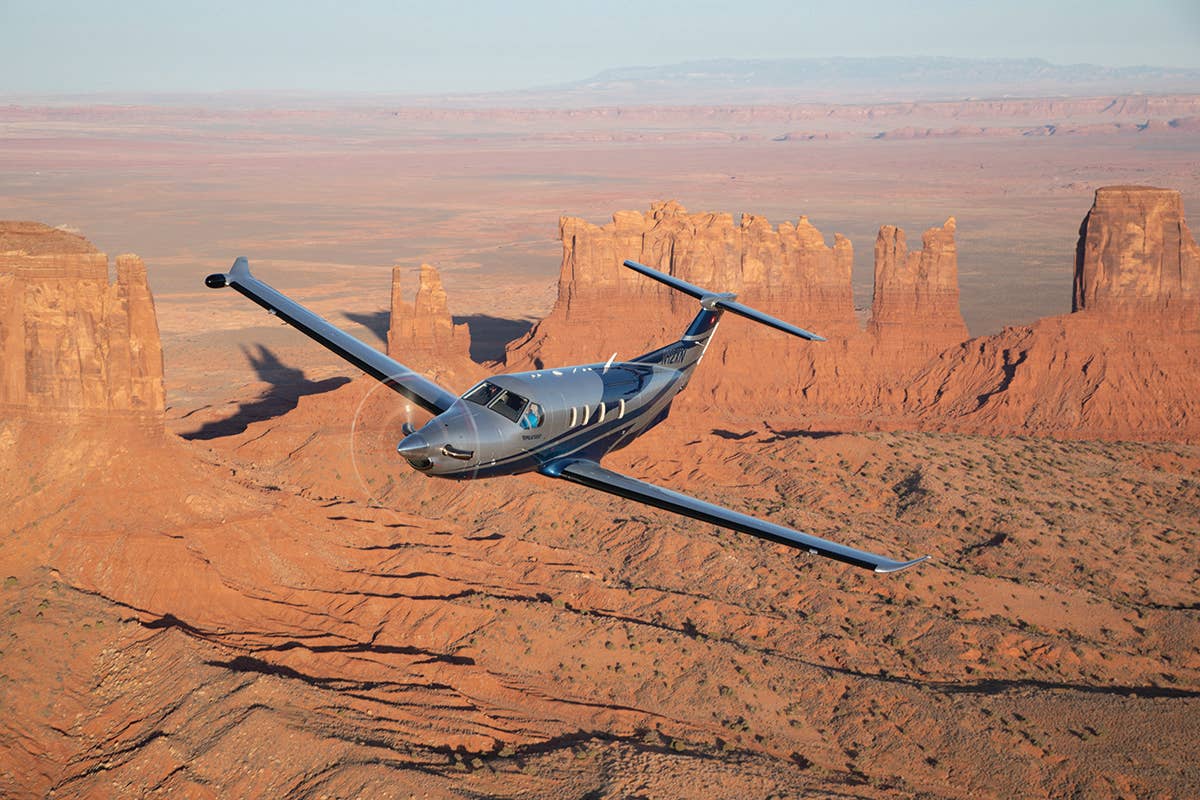Aircraft for Your Escape to Kiawah Island
The Pilatus PC-12 NGX and the Daher TBM 960 offer speed, style and cargo carrying capabilities.

With its 2,236-pound payload, the Pilatus PC-12 NGX can carry up to 10 passengers, plus a pilot, and/or a lot of stuff, making it a versatile mount for your vacation to the South Carolina coast. [Credit: Pilatus]
For your trip to Kiawah Island—or the fine city of Charleston—you want to arrive in style, and in an airplane that can keep up. Whether you’re running with the bizjets at Charleston Executive, or following a Lockheed C-130 on final at the joint-use Charleston Air Force Base/International Airport, speedwise, our two choices can match whatever speed ATC needs you to maintain—and allow you to take along what you need for your adventure.
All the Gear: Pilatus PC-12 NGX
If you just can’t bear to leave any gear at home—but you still need more speed than a Cessna Caravan would offer—you might choose the Pilatus PC-12 NGX. The PC-12’s Pratt & Whitney PT6E-67XP turboprop powerplant pulls the aircraft’s max gross weight of 10,450 pounds through the air at speeds up to 290 ktas.
With an up to 2,236-pound payload, the PC-12 can either carry a lot of people—up to 10 plus a pilot—or a lot of stuff, or a combination of both. The large cargo door accommodates things like motorbikes, or a 1,000-pound pallet plus 400 more pounds of cargo with a single pilot on board.
The PC-12 can accommodate a takeoff distance of as little as 2,485 feet under certain conditions, and a 2,170-foot landing distance as well. With a 1,803 nm range (with four passengers) or 1,568 nm (with six people), you can strike for Kiawah from pretty far away—and at a maximum altitude of 30,000 feet.
The updated Honeywell-based integrated flight deck has been branded the Advanced Cockpit Environment by Pilatus, and it features four 10.4-inch displays hosting synthetic vision, weather radar, and other pilot-friendly features. With the Innovative Solutions & Support ThrustSense autothrottle integrated into the power quadrant, engine management is streamlined and efficient as well. When you pull up to the flightline to unload your gear at Charleston, folks will stop to watch what you take out of that big door.
Speed & Style: Daher TBM 960
You may feel the need for speed—and the latest in the line of TBMs from Daher can serve that up for you. With a max cruise of 326 ktas at 28,000 feet, burning roughly 64.9 gph—assuming max gross weight at 7,300 pounds and ISA conditions—the TBM 960 keeps its sweet spot intact for single-engine turboprops.
With the newest model, there’s a significant change up front. The Pratt & Whitney PT6E-66XT engine rated at 895 shp has seen an uptick in its thermodynamic power rating to 1,844 hp. You can seek better economy by pulling the airplane back to 308 ktas at 28,000 feet—the 960 burns roughly 57 gph at this reduced power setting. And the range extends out to 1,730 nm at 252 ktas. Minimum takeoff distance is 2,535 feet under standard conditions, with landing distance roughly the same.
The updated powerplant is managed via a FADEC-style, dual-channel digital engine and propeller electronic control system (EPECS) combined with an autothrottle for ease of engine start and in-flight monitoring.
On the flight deck, the Garmin G3000 avionics suite hosts the HomeSafe autoland system among its safety features, which allows a passenger to initiate an emergency landing function in the event the pilot becomes incapacitated. Underspeed protection and emergency descent management add to the envelope protection available to the pilot.
With a maximum takeoff weight of up to 7,615 pounds, the 960 can carry from 220 to 396 pounds within the pressurized cargo compartment in the cabin—giving loading flexibility for those things you just don’t want to throw in the baggage hold—and up to 1,446 pounds of payload. All of this comes wrapped in a sleek profile that will turn heads on a ramp packed with the snazziest bizjets.
This article was first published in the 2022 Southeast Adventure Guide of FLYING Magazine.

Sign-up for newsletters & special offers!
Get the latest FLYING stories & special offers delivered directly to your inbox






